Contributors
-
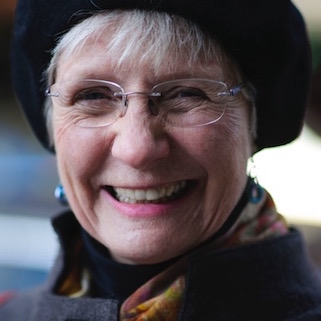 Caroline Bruzelius works on architecture, sculpture, and urbanism in the Middle Ages. She has been awarded numerous grants and prizes, including grants from the Guggenheim Foundation, the National Endowment for the Humanities, the Max-Planck Institute (Hertziana Library), and the Fulbright Association. She is former Director of the American Academy in Rome, a Fellow of the American Academy of Arts and Sciences, and at the Medieval Academy. Bruzelius is co-Director of a database on images of the monuments in the medieval Kingdom of Naples, and is working on two new studies: a book called “The Cathedral and the City,” and a general study of architecture in the Medieval Kingdom of Sicily. She was founding director of the Wired! Lab (2009-2017).
Caroline Bruzelius works on architecture, sculpture, and urbanism in the Middle Ages. She has been awarded numerous grants and prizes, including grants from the Guggenheim Foundation, the National Endowment for the Humanities, the Max-Planck Institute (Hertziana Library), and the Fulbright Association. She is former Director of the American Academy in Rome, a Fellow of the American Academy of Arts and Sciences, and at the Medieval Academy. Bruzelius is co-Director of a database on images of the monuments in the medieval Kingdom of Naples, and is working on two new studies: a book called “The Cathedral and the City,” and a general study of architecture in the Medieval Kingdom of Sicily. She was founding director of the Wired! Lab (2009-2017). -
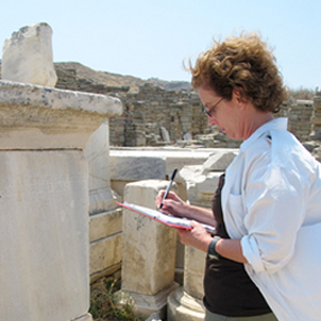 Sheila Dillon received a PhD in Classical Art and Archaeology from the Institute of Fine Arts, New York University. She teaches courses on Greek and Graeco-Roman art and archaeology. Her research interests focus on portraiture and public sculpture and on reconstructing the statuary landscape of ancient cities and sanctuaries. Professor Dillon was a member of the Aphrodisias Excavations in Turkey from 1992-2004, has worked at the Sanctuary of the Great Gods on the island of Samothrace, and now spends summers doing fieldwork in Athens. Her current research includes a collaborative project to publish the portrait sculpture from the Excavations in the Athenian Agora with a group of current and former students, and a digital mapping project of the history of the archaeological excavations in the Agora, a collaborative endeavor centered in the Wired! Lab that involves undergraduate and graduate students at Duke.
Sheila Dillon received a PhD in Classical Art and Archaeology from the Institute of Fine Arts, New York University. She teaches courses on Greek and Graeco-Roman art and archaeology. Her research interests focus on portraiture and public sculpture and on reconstructing the statuary landscape of ancient cities and sanctuaries. Professor Dillon was a member of the Aphrodisias Excavations in Turkey from 1992-2004, has worked at the Sanctuary of the Great Gods on the island of Samothrace, and now spends summers doing fieldwork in Athens. Her current research includes a collaborative project to publish the portrait sculpture from the Excavations in the Athenian Agora with a group of current and former students, and a digital mapping project of the history of the archaeological excavations in the Agora, a collaborative endeavor centered in the Wired! Lab that involves undergraduate and graduate students at Duke. -
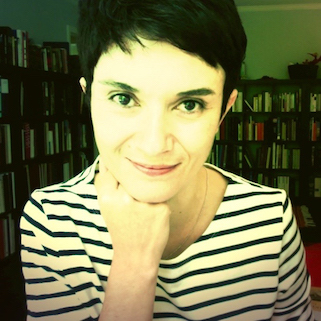 Sara Galletti is an Associate Professor of Art and Architectural History. She received a joint PhD in the History of Architecture and Urbanism from the Université de Paris IV–Sorbonne and the Università IUAV of Venice. Her main field of research and teaching is the history and theory of sixteenth- and seventeenth-century architecture in France. Her first book, Le Palais du Luxembourg de Marie de Médicis, 1611-1631, was published by Éditions Picard (Paris, 2012). She is currently working on two projects: (1) Practice into Theory: Philibert Delorme, the Premier Tome de l’Architecture (1567), and the Profession of Architecture in Early Modern France, which analyses the connections between architectural theory and practice in fifteenth- to seventeenth-century France; and (2) Paris of Waters, which focuses on the impact of water on the demographic, social, architectural, and urban development of the city of Paris through time.
Sara Galletti is an Associate Professor of Art and Architectural History. She received a joint PhD in the History of Architecture and Urbanism from the Université de Paris IV–Sorbonne and the Università IUAV of Venice. Her main field of research and teaching is the history and theory of sixteenth- and seventeenth-century architecture in France. Her first book, Le Palais du Luxembourg de Marie de Médicis, 1611-1631, was published by Éditions Picard (Paris, 2012). She is currently working on two projects: (1) Practice into Theory: Philibert Delorme, the Premier Tome de l’Architecture (1567), and the Profession of Architecture in Early Modern France, which analyses the connections between architectural theory and practice in fifteenth- to seventeenth-century France; and (2) Paris of Waters, which focuses on the impact of water on the demographic, social, architectural, and urban development of the city of Paris through time. -
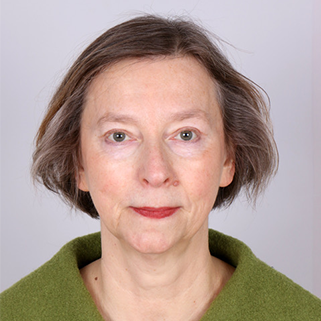 Olga Grlic is a Project Manager for The Medieval Kingdom of Sicily Image Database. She received her MA and PhD degrees in Comparative Literature and Medieval Studies from the University of California, Berkeley. Her undergraduate degrees were in French and Spanish from University of Zagreb, Croatia. From 2014 to 2016 she was Visiting Lecturer in the Department of Germanic and Slavic Languages and Literatures at the University of North Carolina, Chapel Hill. She has published on Dante and made numerous translations from French to English. Her interest in the Norman Kingdom of Sicily arose from working on representations of castles in chivalric literature in Old French, and on cultural contacts between Western Europe, Byzantium, and the Crusader states in the twelfth century.
Olga Grlic is a Project Manager for The Medieval Kingdom of Sicily Image Database. She received her MA and PhD degrees in Comparative Literature and Medieval Studies from the University of California, Berkeley. Her undergraduate degrees were in French and Spanish from University of Zagreb, Croatia. From 2014 to 2016 she was Visiting Lecturer in the Department of Germanic and Slavic Languages and Literatures at the University of North Carolina, Chapel Hill. She has published on Dante and made numerous translations from French to English. Her interest in the Norman Kingdom of Sicily arose from working on representations of castles in chivalric literature in Old French, and on cultural contacts between Western Europe, Byzantium, and the Crusader states in the twelfth century. -
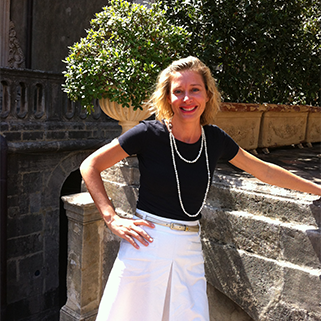 Kristin Love Huffman is a Lecturing Fellow in the Department of Art, Art History & Visual Studies at Duke University. Her current research focuses on the uses, configurations, and, at times, deliberate re-ordering of architectural spaces and larger urban systems in early modern Venice. Her interest in urban experiences and reconstructing transformed or demolished spaces led her to work with Wired! at Duke as well as Visualizing Venice beginning in 2013. From 2014-2017, she worked to create the exhibition, A Portrait of Venice: Jacopo de’ Barbari’s View of 1500 on display at the Nasher Museum of Art at Duke (September 2017-January 2018). She is currently working with colleagues at the Correr Museum in Venice, Italy, to feature an expanded version of the 2017-2018 exhibition, A Portrait of Venice, as an installation centered on the woodcut along with the original wooden blocks used to publish the View in 1500.
Kristin Love Huffman is a Lecturing Fellow in the Department of Art, Art History & Visual Studies at Duke University. Her current research focuses on the uses, configurations, and, at times, deliberate re-ordering of architectural spaces and larger urban systems in early modern Venice. Her interest in urban experiences and reconstructing transformed or demolished spaces led her to work with Wired! at Duke as well as Visualizing Venice beginning in 2013. From 2014-2017, she worked to create the exhibition, A Portrait of Venice: Jacopo de’ Barbari’s View of 1500 on display at the Nasher Museum of Art at Duke (September 2017-January 2018). She is currently working with colleagues at the Correr Museum in Venice, Italy, to feature an expanded version of the 2017-2018 exhibition, A Portrait of Venice, as an installation centered on the woodcut along with the original wooden blocks used to publish the View in 1500.A New Lab Model for Art History & Visual Culture
-
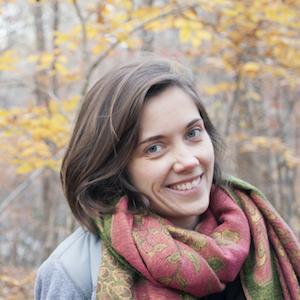 Hannah L. Jacobs provides instruction and conducts research in digital concepts and tools for Wired! courses and projects. She leads tutorials and workshops, collaborates with faculty to develop and implement digital humanities projects in the classroom, consults on faculty research, offers advising on digital tools for undergraduate and Master’s student theses, provides technical support for lab projects, and liaises with other digital humanities staff at Duke. Hannah holds an MA in Digital Humanities from King's College London (2013) and a BA in English/Theatre from Warren Wilson College (2011). She is currently pursuing an MS in Information Science from the University of North Carolina at Chapel Hill (2018-present). She is interested in challenges of conducting and representing historical research via data and visualization; project management in Digital Humanities; applications of digital technologies in Humanities pedagogies; and potentials of visual interactive storytelling for scholarly communications, public outreach, and education.
Hannah L. Jacobs provides instruction and conducts research in digital concepts and tools for Wired! courses and projects. She leads tutorials and workshops, collaborates with faculty to develop and implement digital humanities projects in the classroom, consults on faculty research, offers advising on digital tools for undergraduate and Master’s student theses, provides technical support for lab projects, and liaises with other digital humanities staff at Duke. Hannah holds an MA in Digital Humanities from King's College London (2013) and a BA in English/Theatre from Warren Wilson College (2011). She is currently pursuing an MS in Information Science from the University of North Carolina at Chapel Hill (2018-present). She is interested in challenges of conducting and representing historical research via data and visualization; project management in Digital Humanities; applications of digital technologies in Humanities pedagogies; and potentials of visual interactive storytelling for scholarly communications, public outreach, and education. -
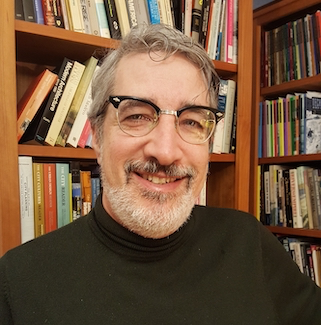 Paul B. Jaskot came to Duke in 2017 after many years of involvement with Digital Art History. He specializes in the history of modern German architecture and art, with a particular interest in the political history of architecture before, during, and after the Nazi era. He has also published on Holocaust Studies topics more broadly, modern architecture including the history of Chicago architecture, and methodological essays on Marxist art history. Paul has also been deeply involved in Digital Art History issues since 2007, both as a scholar and as an advocate. In this role, he has been part of the Holocaust Geography Collaborative, an international team of scholars that has been exploring the use of GIS and other digital methods to analyze central problems in the spatial history of the Holocaust, including issues rising from the built environment. The Wired! project teams of Mapping German Construction and Mapping Occupied Krakow extend and complement this work. With Wired!, Jaskot is also part of the Dictionary of Art Historians team, as well as the Visualizing Cities collaborative.
Paul B. Jaskot came to Duke in 2017 after many years of involvement with Digital Art History. He specializes in the history of modern German architecture and art, with a particular interest in the political history of architecture before, during, and after the Nazi era. He has also published on Holocaust Studies topics more broadly, modern architecture including the history of Chicago architecture, and methodological essays on Marxist art history. Paul has also been deeply involved in Digital Art History issues since 2007, both as a scholar and as an advocate. In this role, he has been part of the Holocaust Geography Collaborative, an international team of scholars that has been exploring the use of GIS and other digital methods to analyze central problems in the spatial history of the Holocaust, including issues rising from the built environment. The Wired! project teams of Mapping German Construction and Mapping Occupied Krakow extend and complement this work. With Wired!, Jaskot is also part of the Dictionary of Art Historians team, as well as the Visualizing Cities collaborative. -
 Mark J. V. Olson is Assistant Professor of the Practice of Visual & Media Studies at Duke University. He collaborates on the development of a new interdisciplinary project that connects the study of the material culture of Art History, Architecture, and Archaeology with new media modes of representation and visualization. Olson is the former Director of New Media & Information Technologies for HASTAC (Humanities, Arts, Sciences & Technology Advanced Collaboratory) and the John Hope Franklin Center for Interdisciplinary & International Studies.
Mark J. V. Olson is Assistant Professor of the Practice of Visual & Media Studies at Duke University. He collaborates on the development of a new interdisciplinary project that connects the study of the material culture of Art History, Architecture, and Archaeology with new media modes of representation and visualization. Olson is the former Director of New Media & Information Technologies for HASTAC (Humanities, Arts, Sciences & Technology Advanced Collaboratory) and the John Hope Franklin Center for Interdisciplinary & International Studies. -
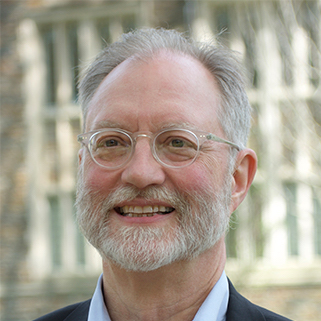 Lee Sorensen received his graduate degrees in art history and library science both from The University of Chicago. He served as the consultant for art historians for the Cambridge Dictionary of American Biography (1994). Professionally he served twice on the executive board of the Art Libraries Society of North America as well as that society's web administrator for a similar time. For more than a score of years he has been art reference librarian and bibliographer at Duke University. He currently serves on the advisory board for Oxford University Press’ Oxford Art Online.
Lee Sorensen received his graduate degrees in art history and library science both from The University of Chicago. He served as the consultant for art historians for the Cambridge Dictionary of American Biography (1994). Professionally he served twice on the executive board of the Art Libraries Society of North America as well as that society's web administrator for a similar time. For more than a score of years he has been art reference librarian and bibliographer at Duke University. He currently serves on the advisory board for Oxford University Press’ Oxford Art Online. -
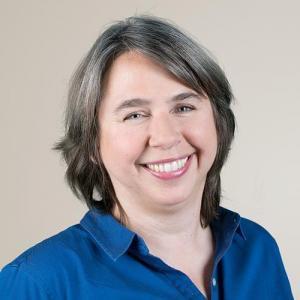 Victoria Szabo is Research Professor of Visual and Media Studies in the Department of Art, Art History & Visual Studies, Graduate Faculty in Computational Media Arts & Cultures, and affiliated with Innovation & Entrepreneurship. She is also the Program Director for Information Science + Information Studies, the Director of Graduate Studies for the MA in Digital Art History/Computational Media, and the Director of the Duke Digital Humanities Initiative at the John Hope Franklin Humanities Institute as well as Co-Director of the PhD Lab in Digital Knowledge. She is co-lead of the Bass Connections Information, Society & Culture theme. Her interests are in digital media and cultures, in theory and in practice, with special attention to media history and its impact on received understandings of the past, and the ways in which critical engagement with new media and information technologies can transform our understandings of history, art, and culture. Her current projects focus on spatial and augmented reality technologies such as interactive maps, virtual worlds, games, and hybrid reality systems, and how they can be applied to humanities teaching and research.
Victoria Szabo is Research Professor of Visual and Media Studies in the Department of Art, Art History & Visual Studies, Graduate Faculty in Computational Media Arts & Cultures, and affiliated with Innovation & Entrepreneurship. She is also the Program Director for Information Science + Information Studies, the Director of Graduate Studies for the MA in Digital Art History/Computational Media, and the Director of the Duke Digital Humanities Initiative at the John Hope Franklin Humanities Institute as well as Co-Director of the PhD Lab in Digital Knowledge. She is co-lead of the Bass Connections Information, Society & Culture theme. Her interests are in digital media and cultures, in theory and in practice, with special attention to media history and its impact on received understandings of the past, and the ways in which critical engagement with new media and information technologies can transform our understandings of history, art, and culture. Her current projects focus on spatial and augmented reality technologies such as interactive maps, virtual worlds, games, and hybrid reality systems, and how they can be applied to humanities teaching and research. -
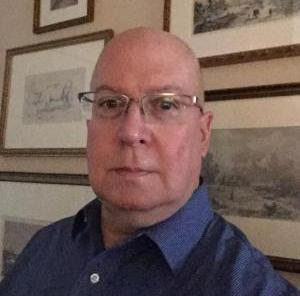 John J. Taormina received his BA in Art History from John Carroll University and MA in Art History from George Washington University. From 1982-1999, he was head of the visual resources/image collections at George Washington University, Oberlin College, The Ohio State University, and the University of Michigan. Since 2000 Taormina has been the curator of visual resources in the Department of Art, Art History & Visual Studies at Duke. As the head of the Visual Media Lab at Duke, he oversees all aspects of the extensive digital and analog image collections. He also manages the department’s communication program and the department’s exhibition spaces in Smith Warehouse. Taormina has been the metadata and image consultant to the Medieval Kingdom of Sicily Image Database project since its inception in 2011. In 2015, he co-organized with Caroline Bruzelius the Wired! symposium, “Apps, Maps & Models: Digital Pedagogy and Research in Art History, Archaeology & Visual Studies.” Since 2018, he has been part of the Building Duke Bass Connections project team. After three years of research, John published his 150-page Digital Humanities Bibliography in 2019, with ongoing revisions and additions.
John J. Taormina received his BA in Art History from John Carroll University and MA in Art History from George Washington University. From 1982-1999, he was head of the visual resources/image collections at George Washington University, Oberlin College, The Ohio State University, and the University of Michigan. Since 2000 Taormina has been the curator of visual resources in the Department of Art, Art History & Visual Studies at Duke. As the head of the Visual Media Lab at Duke, he oversees all aspects of the extensive digital and analog image collections. He also manages the department’s communication program and the department’s exhibition spaces in Smith Warehouse. Taormina has been the metadata and image consultant to the Medieval Kingdom of Sicily Image Database project since its inception in 2011. In 2015, he co-organized with Caroline Bruzelius the Wired! symposium, “Apps, Maps & Models: Digital Pedagogy and Research in Art History, Archaeology & Visual Studies.” Since 2018, he has been part of the Building Duke Bass Connections project team. After three years of research, John published his 150-page Digital Humanities Bibliography in 2019, with ongoing revisions and additions. -
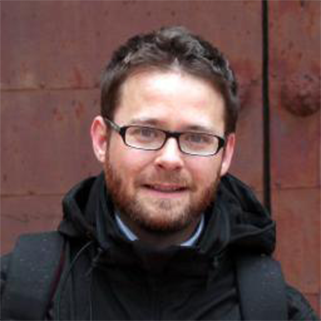 Ed Triplett received a PhD in Art and Architectural History from the University of Virginia in 2015. He also has an MFA in 3D Modeling and Animation from Savannah College of Art and Design, and an MA in History & Museum Studies from the University of Delaware. His dissertation focused on fortress-monasteries and castles occupied by Iberia’s military-religious orders, and he continues pursuing his two main interests: medieval architecture and historical and cultural visualization. Ed teaches courses on historical mapping, medieval castles, and Gothic cathedrals. He is working on a book manuscript about the role castles played in the formation of borders in Medieval Iberia. Ed originally came to Duke as a Council on Library and Information Resources (CLIR) Postdoctoral Fellow tasked with data curation for visual studies in 2015, and he continues to work with the Wired! Lab and other digital scholarship groups on campus. His collaborative digital project seeks to spatially reconstruct The Book of Fortresses–a bound collection of perspective drawings and plans of 58 castles on the border between the kingdoms of Portugal and Spain in 1509-1510.
Ed Triplett received a PhD in Art and Architectural History from the University of Virginia in 2015. He also has an MFA in 3D Modeling and Animation from Savannah College of Art and Design, and an MA in History & Museum Studies from the University of Delaware. His dissertation focused on fortress-monasteries and castles occupied by Iberia’s military-religious orders, and he continues pursuing his two main interests: medieval architecture and historical and cultural visualization. Ed teaches courses on historical mapping, medieval castles, and Gothic cathedrals. He is working on a book manuscript about the role castles played in the formation of borders in Medieval Iberia. Ed originally came to Duke as a Council on Library and Information Resources (CLIR) Postdoctoral Fellow tasked with data curation for visual studies in 2015, and he continues to work with the Wired! Lab and other digital scholarship groups on campus. His collaborative digital project seeks to spatially reconstruct The Book of Fortresses–a bound collection of perspective drawings and plans of 58 castles on the border between the kingdoms of Portugal and Spain in 1509-1510. -
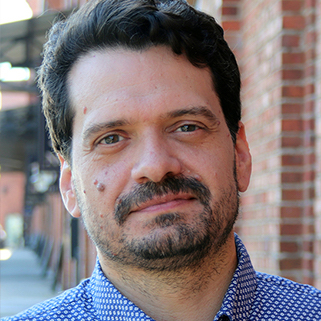 Augustus Wendell, Assistant Professor of the Practice, researches the application of digital spatial modeling and analysis in historical studies. He brings several decades of experience in the modeling and simulation of complex spaces to the lab. On the Building Duke project he is working with students on the creation and programming of an interactive 3D model of the Duke University historical development. Both Deconstructing Urban Visions: Computational Analysis of Aerial Engravings and Modeling Agency: Historical Agent Based Modeling feature the ongoing development of originally programmed 3D spatial analysis tools. Augustus enjoys overlapping the orbit of computational humanist inquiry with students of Computer Science and Mathematics. He has an MFA in Computer Art from The School of Visual Arts and a BS from Northeastern University. Augustus has also held appointments at the New Jersey Institute of Technology, Parsons the New School for Design, The New York School of Interior Design and Virginia Tech.
Augustus Wendell, Assistant Professor of the Practice, researches the application of digital spatial modeling and analysis in historical studies. He brings several decades of experience in the modeling and simulation of complex spaces to the lab. On the Building Duke project he is working with students on the creation and programming of an interactive 3D model of the Duke University historical development. Both Deconstructing Urban Visions: Computational Analysis of Aerial Engravings and Modeling Agency: Historical Agent Based Modeling feature the ongoing development of originally programmed 3D spatial analysis tools. Augustus enjoys overlapping the orbit of computational humanist inquiry with students of Computer Science and Mathematics. He has an MFA in Computer Art from The School of Visual Arts and a BS from Northeastern University. Augustus has also held appointments at the New Jersey Institute of Technology, Parsons the New School for Design, The New York School of Interior Design and Virginia Tech.